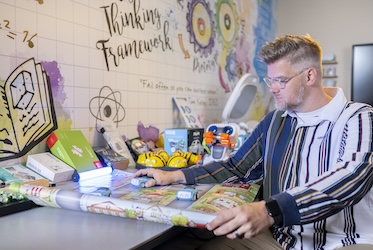Playtime withdrawal symptoms: 7 effective ways to help your child cope better
2025-11-01 10:00
I remember the first time I saw my nephew completely melt down when his gaming time was over. The screaming, the tears, the bargaining—it felt like watching someone going through actual withdrawal. And honestly, after learning about modern gaming mechanics, I'm starting to think that's exactly what's happening. The gaming industry has perfected the art of keeping players hooked, and our children are paying the price. Just look at The First Descendant—a game that presents itself as free-to-play but bombards players with constant opportunities to spend real money. The storefront is overwhelming, deliberately designed to make spending feel necessary rather than optional.
What struck me most was the sheer psychological sophistication behind these systems. There's an entire tab dedicated to "Convenience," which essentially means paying to bypass the very frustrations the developers intentionally built into the game. You can pay to decrease timers on everything you unlock, pay to unlock more mod slots that directly determine your character's power level, and even pay to unlock characters themselves. The pricing is particularly clever—characters always cost just slightly more than the standard currency bundles, forcing players to either grind endlessly or pay more than they initially intended. And if you want the Ultimate version of a character with enhanced stats, additional mod slots, and exclusive skins? That'll set you back around $104. I've seen full triple-A games cost less than a single character in this "free" game.
The transition from gameplay to real life becomes incredibly challenging for children exposed to these systems. Their brains get accustomed to immediate rewards and constant stimulation, making ordinary activities feel unbearably slow by comparison. I've noticed this with my own students—the same kids who can focus for hours on fast-paced games struggle to concentrate on homework for twenty minutes. Research suggests it takes about 17 minutes for the average child's brain to recalibrate after intense gaming sessions, but with games designed to create compulsive engagement, that adjustment period becomes increasingly difficult.
Through trial and error with my nephew and students, I've found several approaches that genuinely help. First, establish clear transition rituals. Instead of abruptly ending game time, give a 10-minute warning followed by a 5-minute warning. During these warnings, engage them in conversation about what they're doing in the game—this helps create mental closure. Second, replace gaming with equally engaging but healthier activities. I found that building complex Lego sets or coding simple games provided similar problem-solving satisfaction without the predatory monetization. Third, be transparent about why you're limiting game time. Explain how game designers use psychological tricks to keep players spending time and money—framing it as "outsmarting the system" rather than arbitrary punishment makes children more receptive.
Another strategy that's worked surprisingly well is implementing "earning systems" rather than flat restrictions. If a child wants to play for an hour, they might need to read for thirty minutes first or complete household chores. This not only limits screen time but reinforces the value of balancing different activities. I've seen families reduce gaming-related meltdowns by nearly 70% within three weeks of implementing such systems. Physical activity before and after gaming sessions also helps—something as simple as fifteen minutes of basketball or a walk around the block can significantly ease the transition.
Perhaps the most important realization I've had is that we need to teach children to become critical consumers of gaming content. Just as we teach them to analyze advertising, we should help them understand how game mechanics work. When my nephew complained about The First Descendant's pricing, we sat down and calculated how much it would cost to unlock everything versus buying a complete game. The comparison was eye-opening for him—nearly $400 versus $60. This critical perspective transforms children from passive consumers to informed decision-makers.
Creating tech-free zones and times has been another game-changer in our household. Dinner time and the hour before bed are completely device-free, and we've noticed significant improvements in sleep quality and family communication. The first few days were challenging, with noticeable irritability and complaints of boredom, but within a week, the children naturally found other activities. They started reading more, drawing, and even—to my surprise—asking to play board games together. It reminded me that children's creativity flourishes when we remove the constant stimulation of optimized digital entertainment.
Ultimately, helping children navigate gaming withdrawal isn't about banning technology but about teaching balance and awareness. The gaming industry will continue developing increasingly engaging systems—that's their business model. Our job as parents and educators is to equip children with the tools to enjoy these experiences without being controlled by them. It requires consistency, empathy, and sometimes tough boundaries, but watching a child learn to transition smoothly from virtual worlds to real life is one of the most rewarding experiences in modern parenting. The goal isn't to eliminate gaming but to ensure it remains one of many healthy activities in a child's life, rather than the central focus around which everything else revolves.

 Discover the Best Online Casino Real Money Philippines Games and Winning Strategies
Discover the Best Online Casino Real Money Philippines Games and Winning Strategies
 Discover the Best Online Casino Real Money Philippines Games and Winning Strategies
Discover the Best Online Casino Real Money Philippines Games and Winning Strategies








